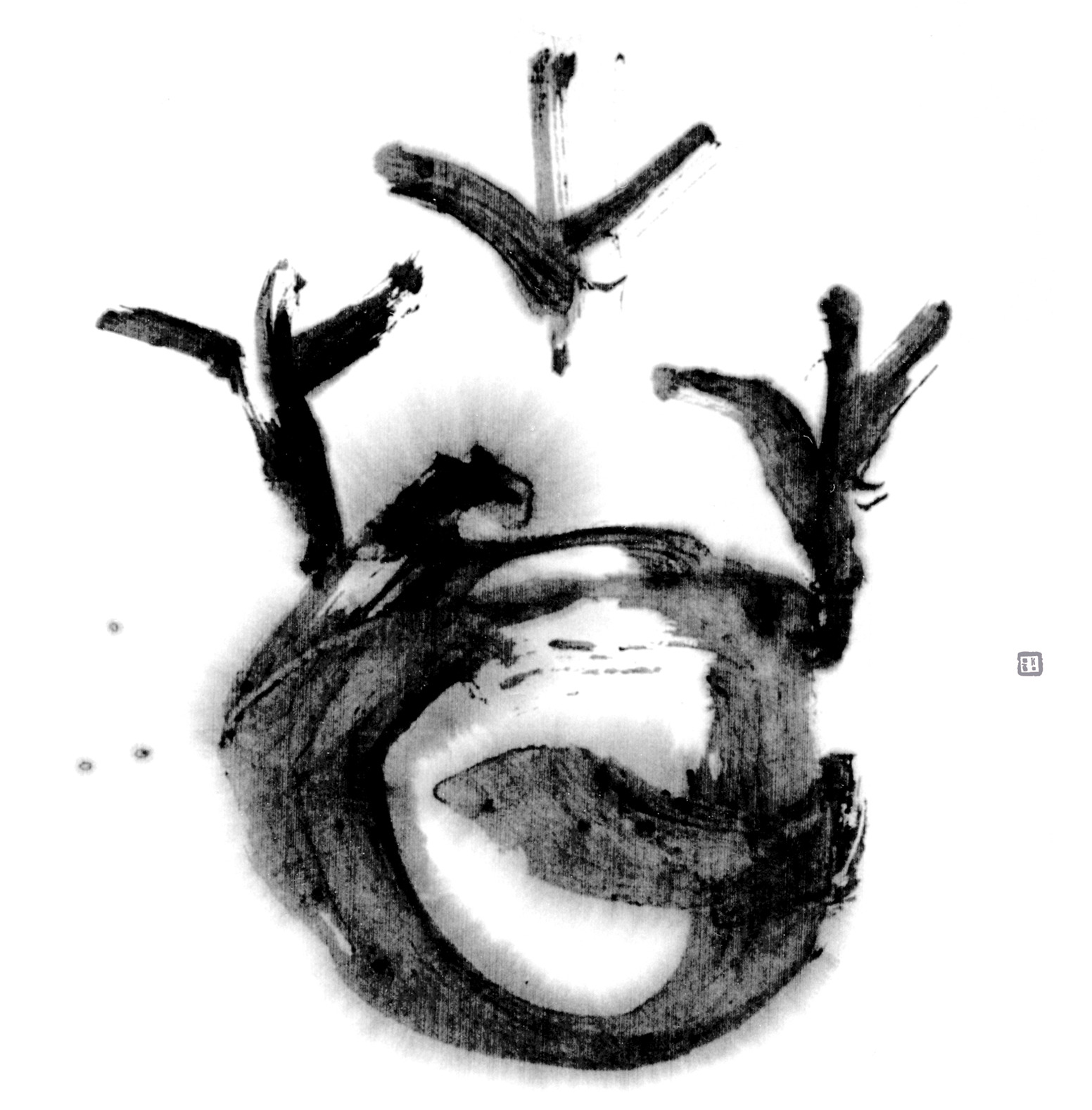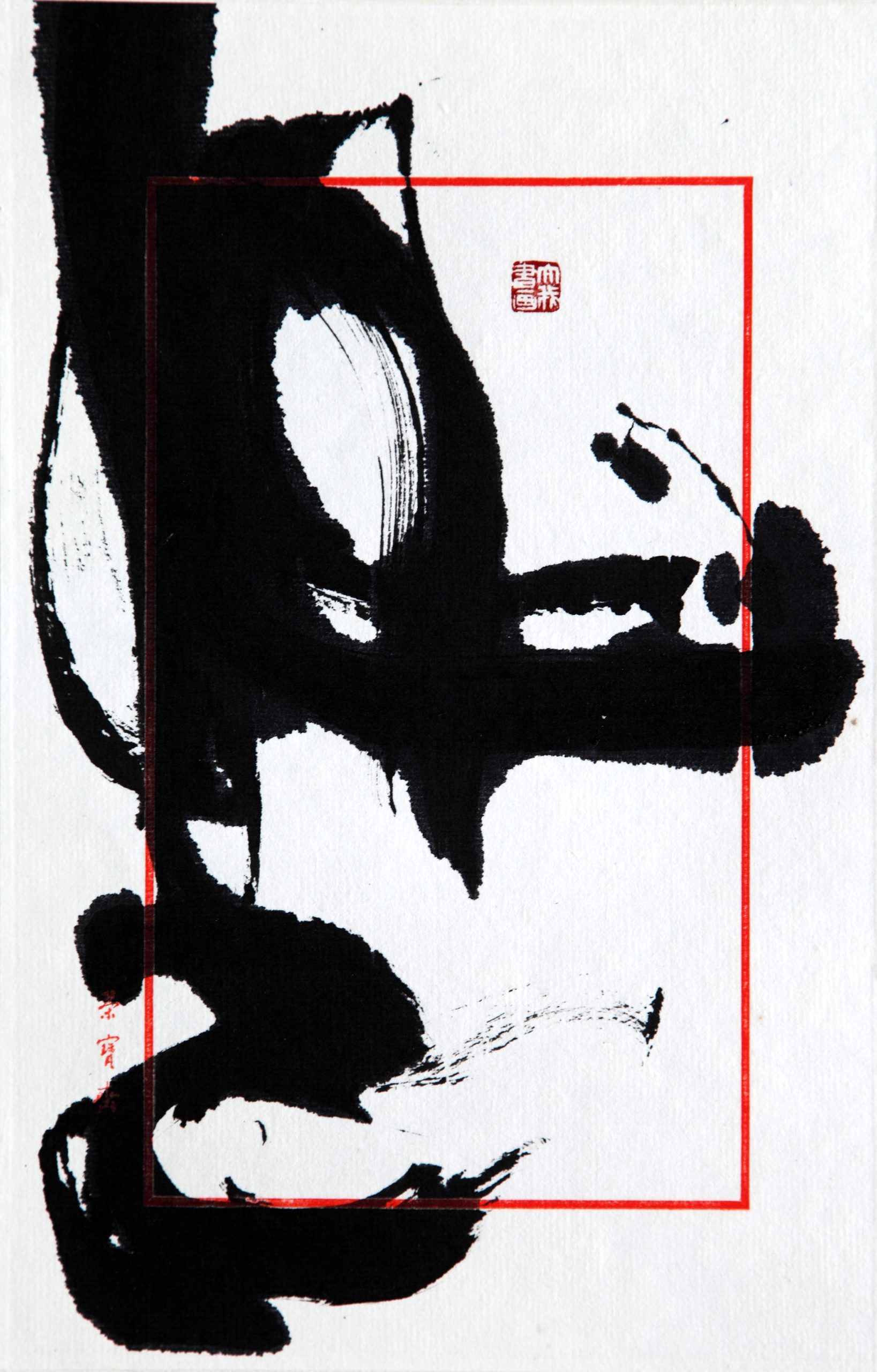VITA
Zhang Dawo was born in Chengu Shanxi province, not far from Beijing in 1942. Dawo received systematic calligraphy training in his profoundly cultural family during his early years. His grandfather was one of the Beijing University’s key staff members, head of the Chinese Literature Department under Cai Yuan-Pei, the principal. Another grandfather was the first president of the National Palace Museum Beijing and a famous archeologist. Dawo’s father, Zhang Wanli, was a linguist, translator and calligrapher.
For the first 40 years of his life he totally immersed himself in traditional forms. Since 1982, he has overcome the classical barrier, by moving from the two dimensional into the three dimensional, a visual revolution made largely possible by the rearrangement of the spatial construction and the use of different tones of ink on special calligraphic paper. An example of this modern calligraphy is ‘Ce’ (Volume) which is considered as being “in the period of present day Chinese art renaissance, unique and one of the most creative pieces of work”.

For the first 40 years of his life he totally immersed himself in traditional forms. Since 1982, he has overcome the classical barrier, by moving from the two dimensional into the three dimensional, a visual revolution made largely possible by the rearrangement of the spatial construction and the use of different tones of ink on special calligraphic paper. An example of this modern calligraphy is ‘Ce’ (Volume) which is considered as being “in the period of present day Chinese art renaissance, unique and one of the most creative pieces of work”.
After the 1990s, Zhang Dawo moved to Australia, where he gained an international perspective in examining Chinese art. His creations became of interest internationally. In addition to creating works on paper, he also uses comprehensive media such as images to interpret writing. Over the past few years he has always maintained a strong creativity.
‘Dawo Miaomo’, his own exclusive artwork, has completely moved away from the recognizable characters. It is “a form of unique Eastern abstract art with unsurpassable quality”; the style is “free and fluid”, graceful and vivid: a forceful expression of romanticism and mysticism of the Oriental. A good example is the ‘Dragon’s Resplendence’, one of the five pieces of his work included in the collection of the British Museum. The exhibition, ‘Brushes with Surprise’ the art of calligraphy in modern China, has been organized by this Museum. All the leading Chinese calligraphers, fifty in all, of the past half century are represented, including Mao Zedong. Dawo, one of the 25 living calligraphers, has been featured as the leading avantgarde in this exhibition. Other corporate and private collectors include Ford Foundation and Rupert Murdoch.
Dawo is a member of the Association of Chinese Calligraphers and the Committee member of the Society of Modern Calligraphy and Painting (China). He is the founder of the Australian Society of East-West Art, Writing and Modeling and co-founder of the studio ‘Devil Art’. Since 1985 Zhang Dawo has participated in many national and international exhibitions, solo and group exhibitions.




